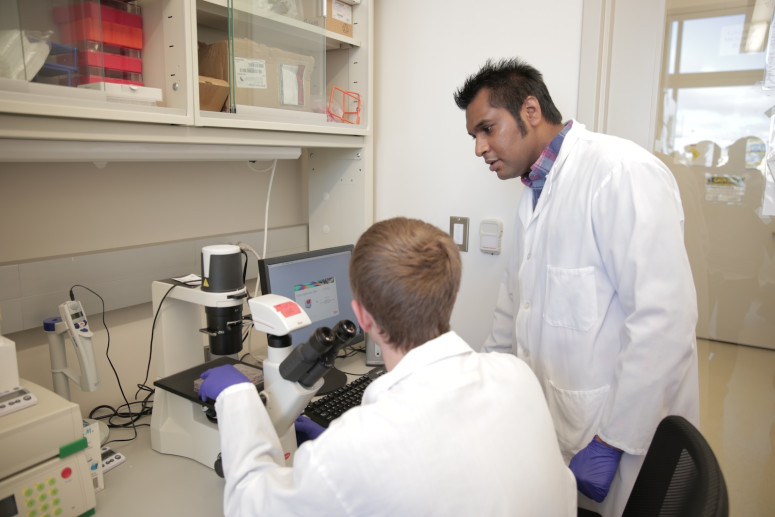A promising therapy that treats blood cancers by harnessing the power of the immune system to target and destroy cancer cells could now treat solid tumors more efficiently.
Thanks to a recent study from Dan Cappabianca and Krishanu Saha at the Department of Biomedical Engineering and the Wisconsin Institute for Discovery published in Molecular Therapy – Methods & Clinical Development, Chimeric Antigen Receptor (CAR) T-cell therapy can be improved by altering the conditions the T cells are grown in. And it was all discovered by chance.
T cells are white blood cells crucial for the immune system’s response to infections and cancer. They can be modified with CRISPR/Cas9 genome editing technology to express a specific receptor that redirects their natural “killing instincts” toward targeting cancer cells, specifically those in tumors. T cells can “remember” a pathogen after first exposure, allowing a quicker and stronger response if encountered again, like how vaccines train the immune system to recognize and fight off specific pathogens.
But for the cells to be used as a robust cancer treatment, they must be made in specific conditions in the lab.
“We were comparing two distinct T-cell media formulations with varying nutrient levels,” explains Cappabianca. “Interestingly, our breakthrough came entirely by chance. I inadvertently placed the cells in the wrong medium, which unexpectedly became the focal point of my entire thesis!”
In the body, T cells develop from stem cells in the bone marrow. In the lab, researchers activate the T cells in a nutrient-deficient medium with low concentrations of glucose and glutamine which the cells need for energy. Then they move them to a high-nutrient medium. The first step stresses the cells and triggers specific processes that can enhance their ability to target tumors, promote the formation of T memory cells, and select the more resilient cells that can survive with such low levels of energy. The second step supports rapid growth and T cell multiplication.
The result of this “metabolic priming” was that treated cells retained their stem cell-like qualities, thus enhancing their ability to kill cancer cells, transform into durable memory cells, and survive longer in the body.
“We discovered that by briefly restricting sugar exposure, akin to a three-day ‘keto diet,’ our T cells showed reduced maturity at the end of the manufacturing process. The less mature they are when reinfused into a patient, the longer they live fighting cancer,” says Cappabianca.
The two-step process also appeared to help with cell memory. In CAR T-cell therapy, boosting these memory properties helps T cells better recognize and combat cancer over time.
In recent studies using T cells grown with the lab’s new approach, 63% of patients experienced a partial or complete reduction in tumors for a time. That’s an improvement from clinical trials using CAR T cells that were not grown with the lab’s two-step process where just 15% of patients experienced a partial or complete reduction in tumors after treatment.
More research is needed to understand the key factors that help these CAR T cells live longer and become effective against solid tumors. Looking ahead, researchers hope that this process of “metabolically priming” these specific kinds of CAR T cells can be adapted for large-scale manufacturing with the ultimate goal of treating patients within the next few years.
“A famous aphorism by French chemist Louis Pasteur is that ‘chance favors only the prepared mind,’” says Saha. “Our unplanned media switch — really by chance — led us on a new path of discovery.”
Written by Laura Red Eagle
Link to original story: https://news.wisc.edu/serendipity-reveals-new-method-to-fight-cancer-with-t-cells/


